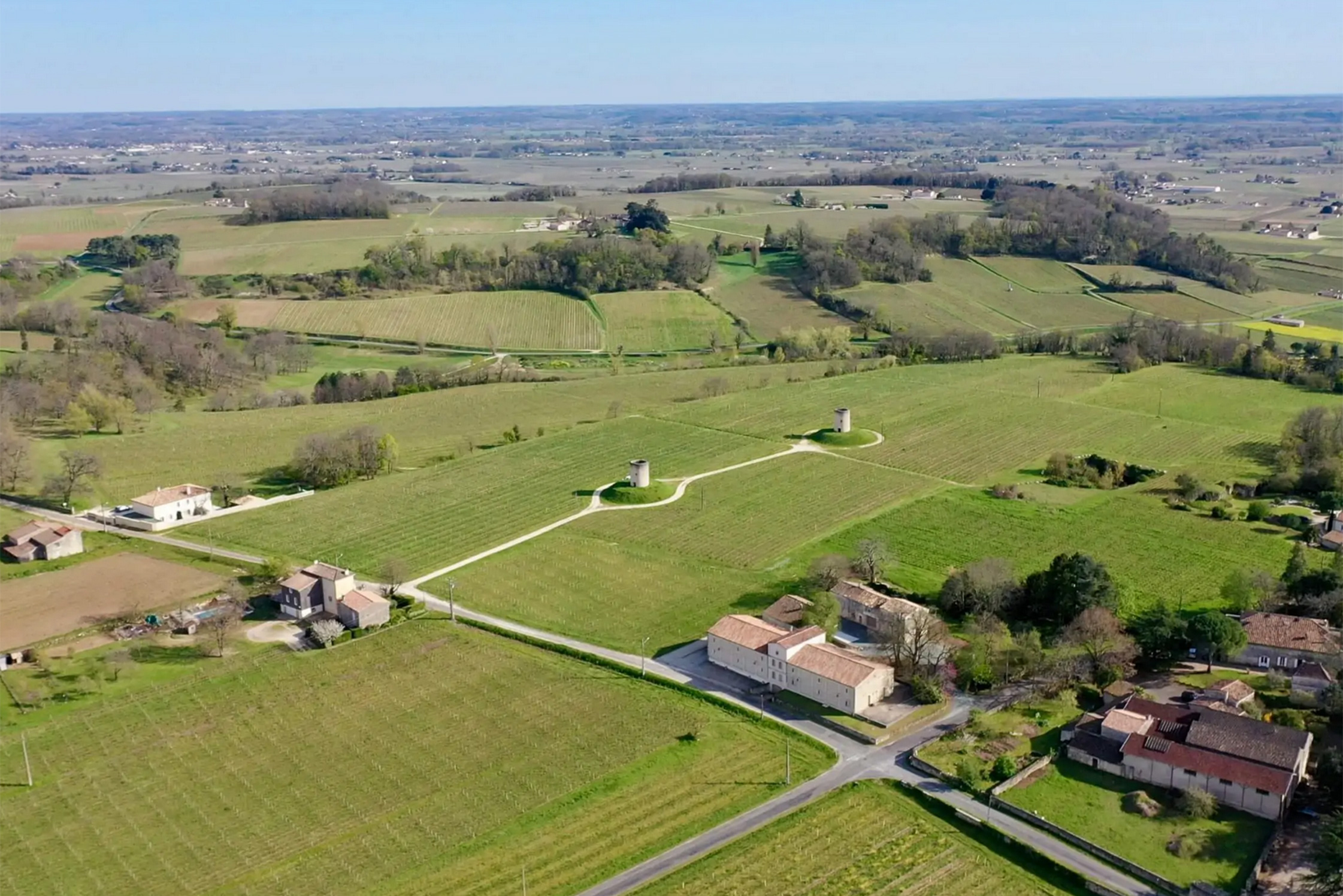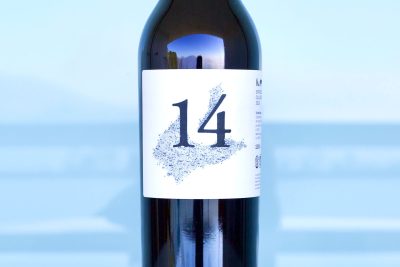Sadon Huguet
Short Summary
Full Length Story
There’s a Bordeaux that rarely makes it into the headlines. It’s not gilded with Grand Cru status, nor does it rest on centuries-old aristocratic laurels. It’s the Bordeaux of quiet radicals, back-row thinkers who took the long way around to find a clear view of what makes this region truly great.
Beyond an interest in finding a high-quality value Bordeaux to offer something for restaurant by-the-glass programs, Bordeaux was very far from my radar. But in walked Mathieu Huguet. It was at the cellar of natural wine rebel—the artistic, eccentric, extremely talented, and ideological Imanol Garay—where our first interaction took place. It was cautious on both sides, which eventually prompted me to ask about his project. What ensued was the beginning of a meaningful relationship with two wonderful human beings rooted in tremendous, uncontrived humility and softness. Their approach is one that may challenge any preconception some of us (mainly this author) may carry about this celebrated and extremely affluent wine culture. Now, having known Mathieu and his partner in life and work, Bénédicte, for a few years, they are yet another set of people who compel me to examine my own motives and approach to this subject and métier that I hold so dearly.
This husband-and-wife team responsible for overseeing production at nearly twenty châteaux under organic and biodynamic practices started their own project in 2018, their red a blend of 60% Cabernet Franc from the limestone-heavy section of Saint-Émilion with the remainder Merlot grown an hour’s drive to the northwest in Blaye, on what they describe as an identical geological setting to their parcel in Saint-Émilion. Because they are both firsts in their family in the wine business, buying established vineyard land in Bordeaux isn’t a realistic option, so the parcels are rented from two of their biodynamic growers.
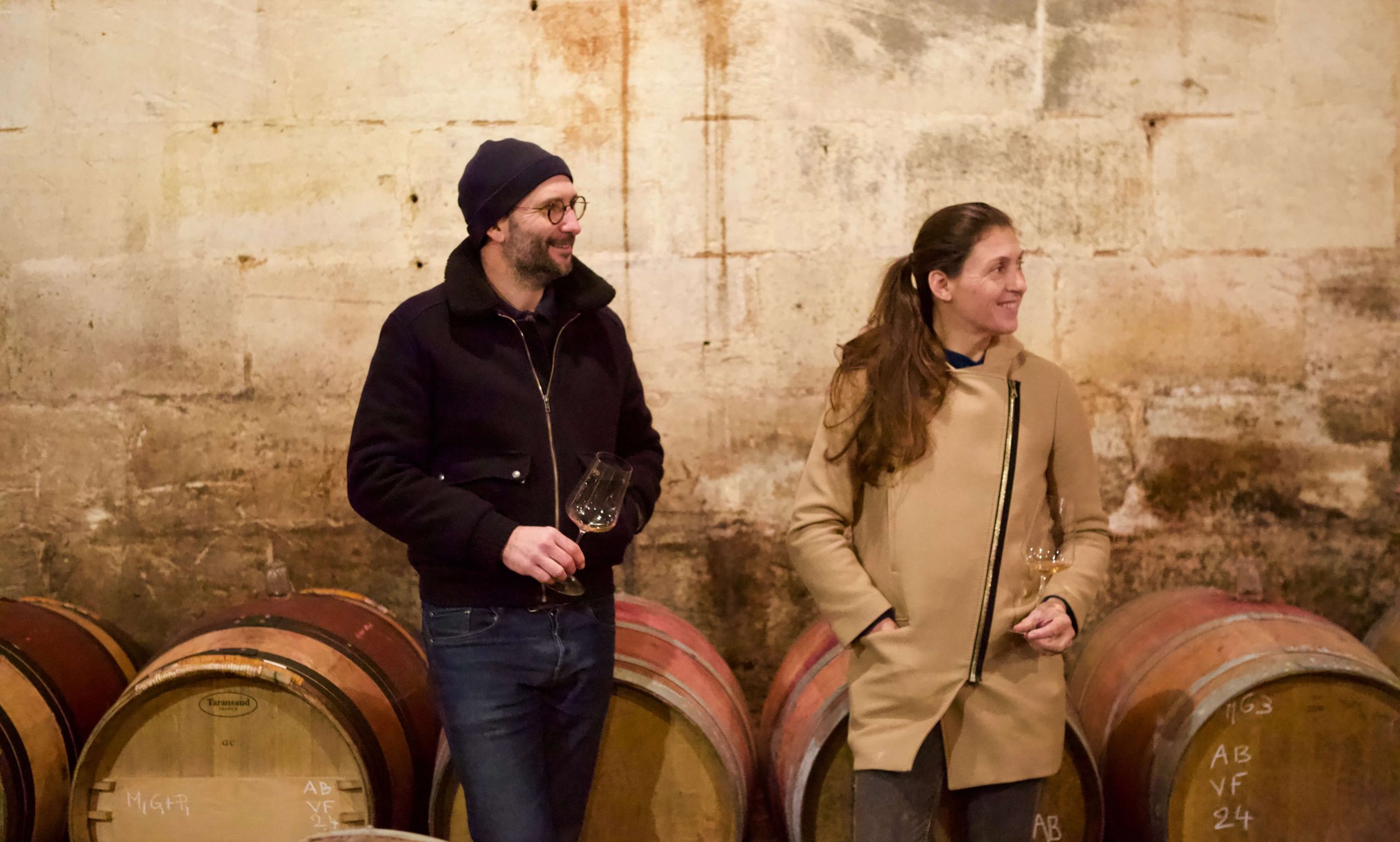
Mathieu and Bénédicte Huguet are both from Landes in southwestern France, a region more known for surfing and pine forests than Merlot and Cabernet. Their path into wine was one of deliberate curiosity, education, and slow revelation. They met at university while studying biology, drawn not to viticulture at first but to the living systems that underpin all of it: soil, fermentation, balance, the life beneath and within a plant. From there, both moved toward wine, Mathieu completing his enology degree in 2002 and Bénédicte earning a Ph.D. in wine microbiology in 2006, followed by a practical enology degree in 2008.
Mathieu’s interest in wine was sparked early with his great-grandfather, a cellar master for a well-known wine merchant on Bordeaux’s historic Quai des Chartrons, once the epicenter of global wine trade. The Quai was Bordeaux’s economic lifeline in the 18th and 19th centuries, where barrels of claret were loaded and traded in quantities the world had never seen before. From those early family memories came an attachment not just to wine, but to the idea of old bottles, deep cellars, and what time could do to a good wine. He still recalls tasting extraordinarily old Bordeaux that lingered not just on the tongue but in memory. His father, too, was a wine lover, and this legacy took root.
But Mathieu’s approach to wine was never nostalgic. He saw winemaking as a living craft that required constant engagement, experimentation, and adaptation. He began working immediately after his studies, landing his first role in 2002 with a Grand Cru Classé in Pauillac, a region emblematic of Bordeaux’s hierarchical prestige and its Left Bank traditions. Yet rather than lock into a château trajectory, he moved into consulting, eventually becoming one of Bordeaux’s most respected advisors on biodynamic and organic farming, guiding dozens of domaines through conversion over the following two decades.
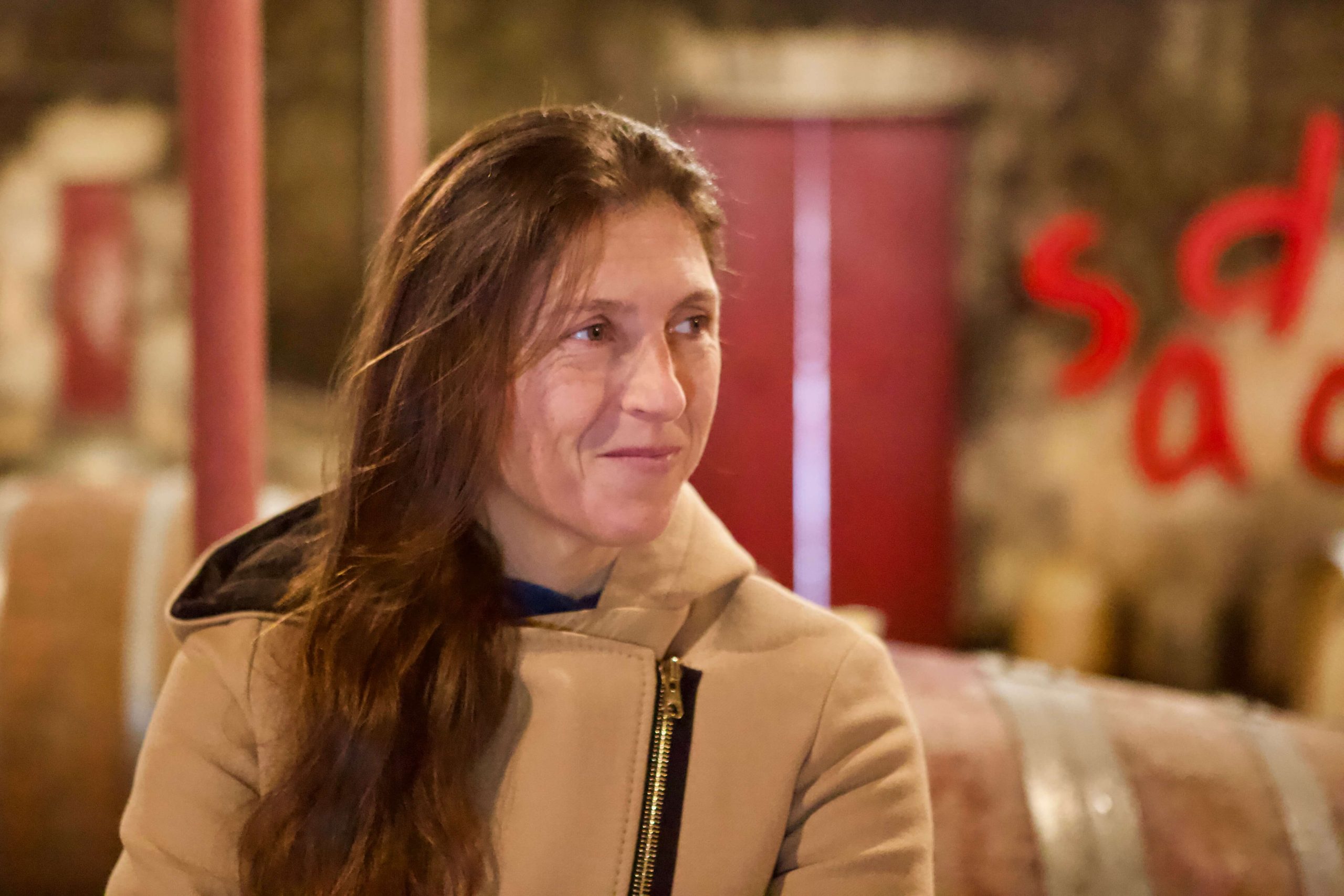
Bénédicte’s path was more independent. Though rooted in agriculture, her family had no background in wine. Her studies were financed by working summers as a lifeguard, and while others sought security in institutional careers, she was drawn to the transformative power of fermentation. Her scientific curiosity (particularly around native yeasts) found its home in wine. After her PhD and enology degree, she took on major technical roles, most notably as director of viticulture and vinification at two of Chanel’s prized Bordeaux estates: Rauzan-Ségla in Margaux and Château Canon in Saint-Émilion. For eight years, the young Bénédicte worked inside some of the most polished cellars in Bordeaux, guiding viticultural precision and cellar operations, and garnering unexpected celebrity inside the appellation.
Later, her interest in fermentation led her to spirits, with rums, gins, and cognacs, where she explored how yeast dynamics translate across categories. These elements and specific nuances of the spirit world are felt even more in their newest projects with white wines of extreme depth and savory characteristics as much akin to spirits as wine—also in their experimental “Hybridis,” a whole-cluster pressed Merlot matured in custom-designed concrete eggs and sandstone amphorae, it floats between categories and expresses nuances that are unusual if not utterly unique. “It’s not red, not white, not rosé,” says Bénédicte. “It’s its own planet. Like Ziggy Stardust.” She doesn’t often romanticize wine; rather she respects it as a dynamic system of biological and cultural choices. “I’m deeply influenced by people and places,” she says. “A great vineyard teaches you just as much as a great mentor.”
The two began working together long before founding Sadon Huguet, often overlapping in their consulting roles and vineyard projects. But it wasn’t until 2019 that they finally launched their own wine, born of frustration with the Bordeaux status quo. “At that time,” Mathieu explains, “we were upset by the Grand Crus only looking after architects. We wanted to speak about grape quality and sensitivity.”
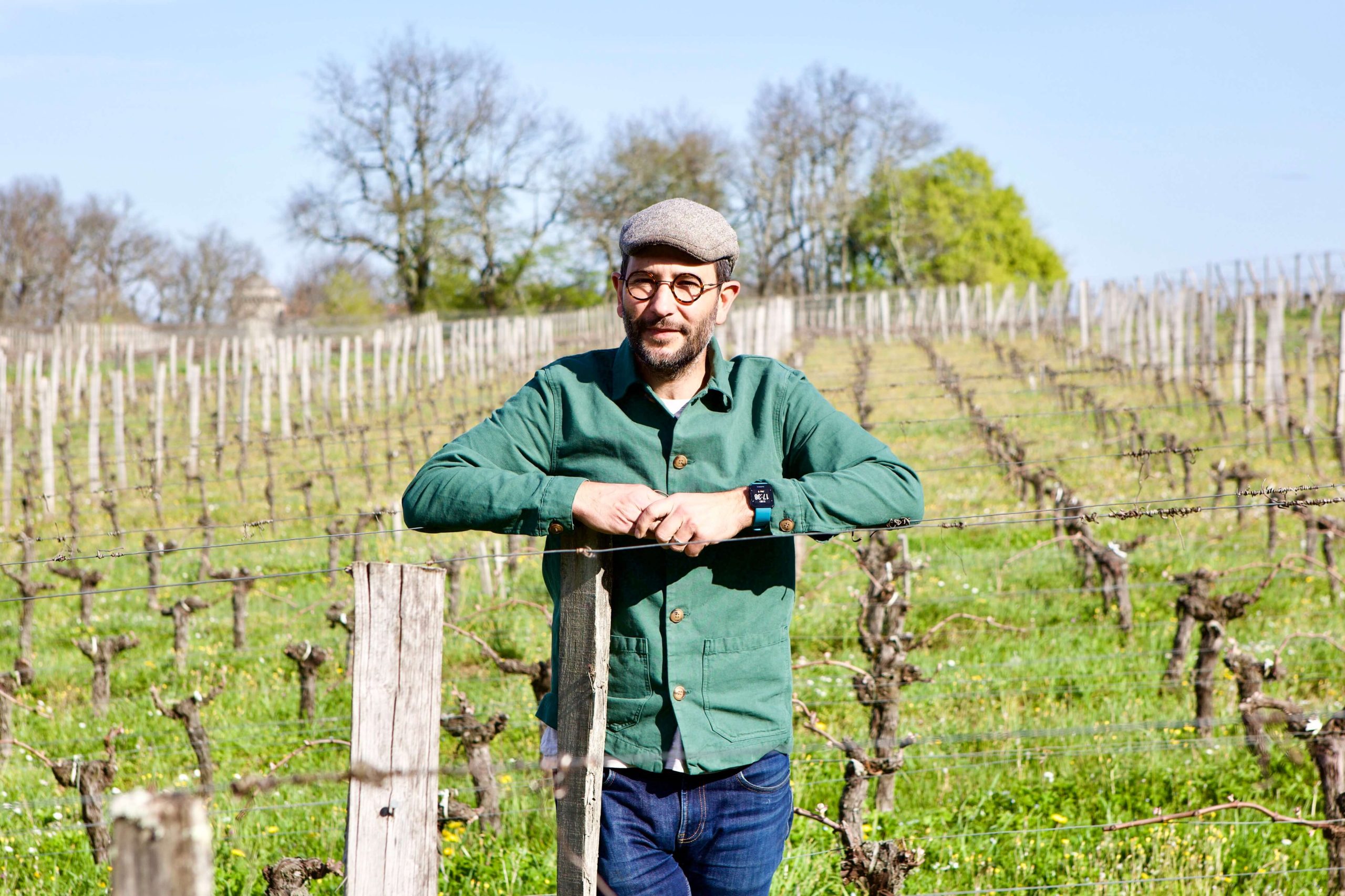
They farm 2 hectares in Bordeaux and 2.1 hectares in the Basque Country, mostly by themselves. Workers are brought in for peak times like trellising, and they’re trained carefully. “Every action is intention,” says Bénédicte.
One parcel was rented in Saint-Émilion and the other in Blaye, and both rest on mother rock limestone and rise above 100 meters—higher than the normal positions of these areas of Bordeaux, with their parcel of Saint-Émilion perched at the appellation’s highest point. Though the appellations are separated by 30 kilometers with the Gironde estuary in the middle, the geology remained contiguous. But what distinguishes them is not soil nor distance, but history and perception.
They avoid plowing to protect soil life from UV damage. Cover crops are left to grow to shade the topsoil and regulate temperature. They braid shoots rather than cutting them to slow growth and reduce stress. They rely heavily on herbal teas—yarrow, valerian, horsetail—to boost vine resilience. It’s a viticulture of attention, not control.
Their wines, unsurprisingly, reflect that. “We’re trying to bottle vibration,” says Mathieu. “When someone tastes our Expression Calcaire and says they feel the limestone powder on their tongue—that’s everything to us.”
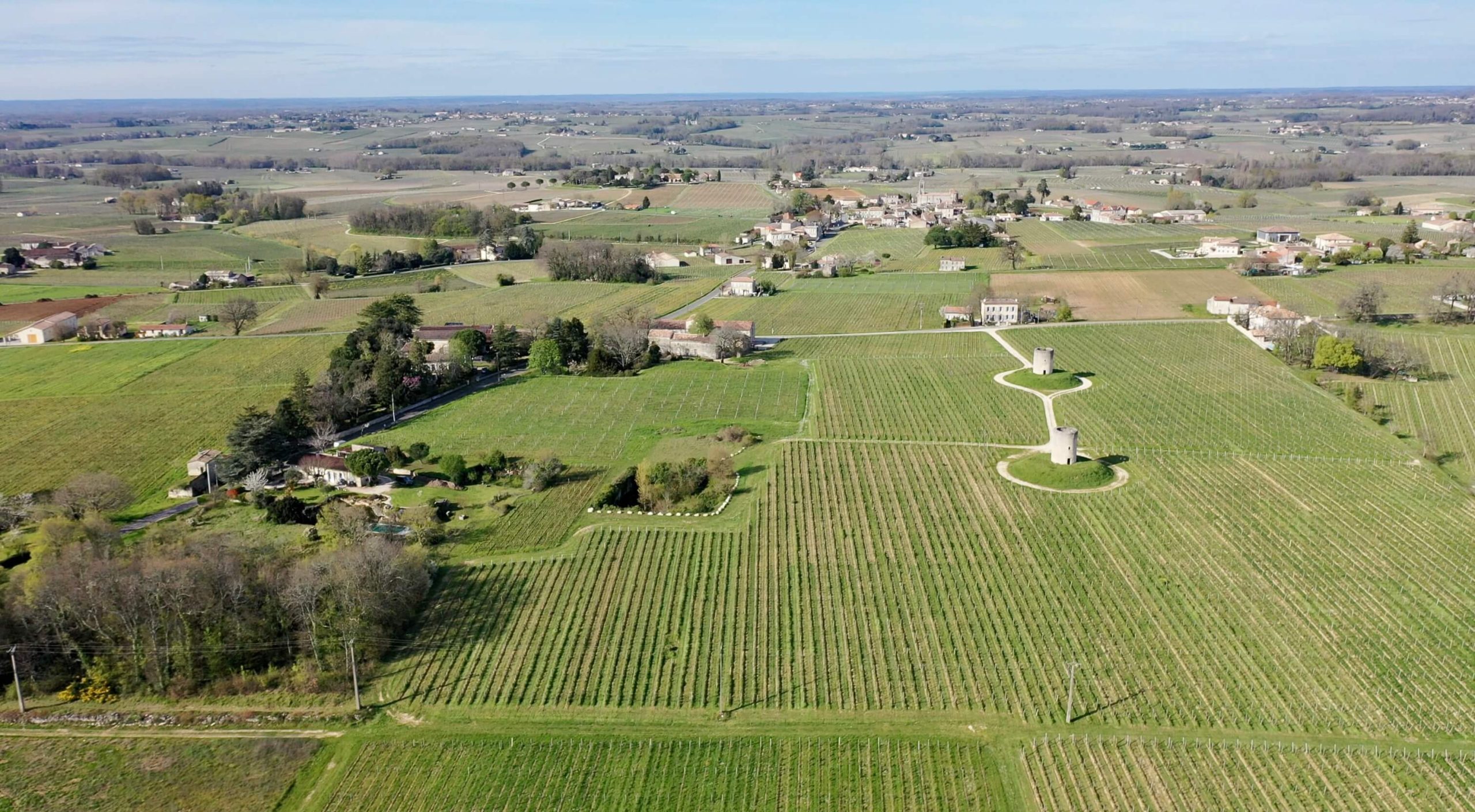
To understand Bordeaux from a skin-deep perspective, one must revisit the 1855 Classification. Commissioned by Napoleon III for the Exposition Universelle in Paris, Bordeaux’s official hierarchy was constructed not around geology or agricultural potential, but price: it was to be a commercial ranking of the most expensive and widely traded wines. At the time, the Left Bank châteaux of the Médoc dominated the trade thanks to their larger estate sizes, better infrastructure, and close ties with négociants and aristocrats.
“It wasn’t always about the quality of the terroir,” Bénédicte said when asked about why a good vineyard parcel such as the one they’ve isolated in Blaye has the same guts as Saint-Émilion but is just across the river from Saint-Julien and Margaux and without a higher classification.
Blaye is massive compared to the appellations across the river. It wasn’t necessarily that Blaye, and even Pomerol, a small appellation with small independent land holders without much of a tie to aristocracy, and Saint-Émilion, spurred into greater production by monastic orders to produce for local consumption rather than global commerce, were incapable of producing high-quality wine back then. Many of them were small and family-run, and without commercial muscle. They were overlooked, regardless of soil quality.
Saint-Émilion was left out until its own classification system was created a century later, and Pomerol, with some of the most prized land in the world today, remains unclassified. Blaye is still Blaye: an underrated source for excellent quality and price, but with some well-kept secrets Mathieu and Bénédicte are unearthing.
Bordeaux’s 1855 classification became self-perpetuating—a system much like New York’s finance world, Silicon Valley tech, or Hollywood cinema, where early advantages compounded into structural dominance.
Sidestepping all of it, Sadon Huguet’s wines are not labeled under Bordeaux’s appellations, even though they qualify. They choose Vin de France. “We’re part of Bordeaux, of course,” says Mathieu, “but we want to stay free to express our own vision of a limestone terroir. Not the market’s vision of it.” Their “Expression Calcaire” is uniquely a blend of grapes grown an hour apart, which is very uncommon in Bordeaux from any grower of quality wines.
Only 78 of Bordeaux’s 5,600 domaines are certified biodynamic, and fewer still work as naturally as Sadon Huguet. But a small community is taking shape. They share biodynamic preparations with like-minded growers in the Loire and the Southwest. It’s not a movement yet, but it’s something. Sadon Huguet is Bordeaux reimagined: not as empire or brand, but as place, as earth, as expression. Mathieu and Bénédicte are stewards of their rented lands that gave nothing to them easily. And that, perhaps, is why their wines speak so clearly.
<div style=”font-family: the_source_4regular !important; text-transform: lowercase; padding-bottom: 1em !important;”><span style=”font-size: 2rem !important; line-height: .1em!important;”>The Cast Off</span></div>
Their first vintage, 2019, was an exercise in patience and trust. A well-timed rainstorm on September 22nd rebalanced the Merlot. Cabernet Franc came in on October 5. They added the Cabernet Franc once harvested with the Merlot and co-fermented by feel and taste, not by rule. The wine, called Expression Calcaire 14, spent 18 months in barrel. It was vivid, angular, and surprising, “something alive in its own right.”
In 2020, the grapes came in earlier, on September 19th, and both varieties tasted nearly identical, leading them to co-ferment again for harmony and fermentation ease. The wine aged for 20 months in barrel. In 2021, frost and mildew swept through the region, but their parcels—well-tended and resilient—held steady. One week before harvest, they applied Silica horn manure (501), “a biodynamic preparation that sharpens ripeness and structure.” “We realized then,” Bénédicte said, “that this terroir was so resilient.”
2022 brought intense sun and early ripeness. They picked on September 17th and found, once again, that limestone did what limestone does best: preserve freshness.
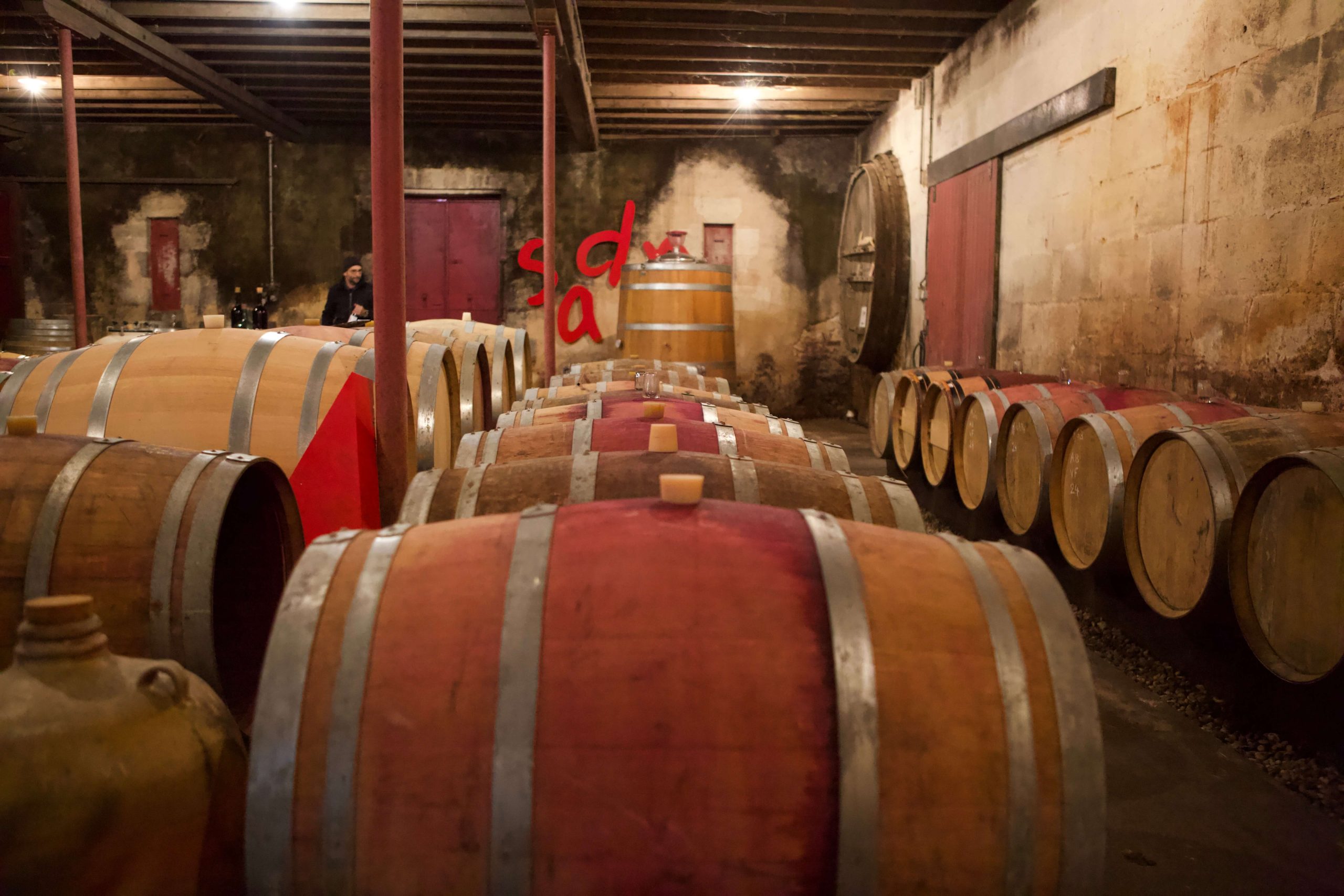
Their cellar practices are humble and deeply manual. Grapes are handpicked into baskets and pulled to the winery by horse on a sled—what juxtaposition to this châteaux-filled region! Destemming happens by gravity and hand over a natural wicker-style screen. Fermentation unfolds in open 700-liter barrels, uncooled, with one gentle punchdown a day by hand. Pressing is done with a manual vertical press, and the wine ages in 400L and 225L barrels, 15% new, from a small cooper named Montgillard. Three to four rackings occur before bottling. There is no fining, no filtration. They monitor wines constantly—not by lab data but by taste. When reduction or oxidation arise, they respond with rackings or top-ups. Sulfites are avoided at all costs, but not ruled out entirely. “If we ever encountered a wine with mouse taint,” says Mathieu, “we’d rather use a little sulfur than release something flawed. But we’d try everything else first.” Their first line of defence against the mouse is to bury the wine as deeply into a reductive state as possible.
In 2022, they started an Iroulegy project, in France’s Basque country. In 2023, they added a white wine from Semillon, grown in Loupiac, Bordeaux. The Semillon is a vibrant wine with a slightly oxidative edge and a sharp mineral spine. During a visit in late 2024, we tasted it during a blending session and contributed our thoughts about the mix. It’s the kind of wine that belongs in tasting menus. There are other things brewing too.
Everything about their work, from vineyard to barrel to bottle, reflects their background. They are not empire builders. They are caretakers. Renting all their vineyards by choice rather than pursuing to purchase, they avoid land speculation, especially in Bordeaux where prices spiral into the absurd. In Irouléguy, land prices are capped, and community values are enforced. “Land is something to preserve,” Mathieu says, “not to trade.”



